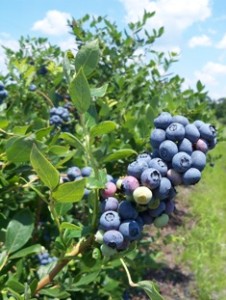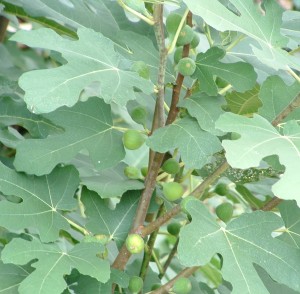Fruits and Berries You Can Grow
go.ncsu.edu/readext?205816
en Español / em Português
El inglés es el idioma de control de esta página. En la medida en que haya algún conflicto entre la traducción al inglés y la traducción, el inglés prevalece.
Al hacer clic en el enlace de traducción se activa un servicio de traducción gratuito para convertir la página al español. Al igual que con cualquier traducción por Internet, la conversión no es sensible al contexto y puede que no traduzca el texto en su significado original. NC State Extension no garantiza la exactitud del texto traducido. Por favor, tenga en cuenta que algunas aplicaciones y/o servicios pueden no funcionar como se espera cuando se traducen.
Português
Inglês é o idioma de controle desta página. Na medida que haja algum conflito entre o texto original em Inglês e a tradução, o Inglês prevalece.
Ao clicar no link de tradução, um serviço gratuito de tradução será ativado para converter a página para o Português. Como em qualquer tradução pela internet, a conversão não é sensivel ao contexto e pode não ocorrer a tradução para o significado orginal. O serviço de Extensão da Carolina do Norte (NC State Extension) não garante a exatidão do texto traduzido. Por favor, observe que algumas funções ou serviços podem não funcionar como esperado após a tradução.
English
English is the controlling language of this page. To the extent there is any conflict between the English text and the translation, English controls.
Clicking on the translation link activates a free translation service to convert the page to Spanish. As with any Internet translation, the conversion is not context-sensitive and may not translate the text to its original meaning. NC State Extension does not guarantee the accuracy of the translated text. Please note that some applications and/or services may not function as expected when translated.
Collapse ▲Thinking of planting fruit trees or berry bushes? Your chances of success have a lot to do with which fruits you choose to grow. Many garden centers in our area currently have fruit and berry plants for sale. Before you rush in to buy, take the time to plan ahead to ensure the money you spend is not wasted.
WHAT YOU CAN GROW
Many types of fruits and berries can be realistically grown in home landscapes in southeastern North Carolina. In order from easiest to most challenging, these include: blackberries, figs, rabbiteye blueberries, Asian persimmon, muscadine grapes, hardy kiwifruit, strawberries, pears, plums, apples, peaches and nectarines. If you are looking for plants that will serve two purposes, try loquat, pineapple guava, or pomegranate, all of which are commonly grown as ornamentals but will occasionally produce fruit as well.
Other fruits are less realistic. Cherries, bunch grapes, raspberries, and apricots are nearly impossible to keep alive for more than a few years because of our hot summers and erratic springs. Citrus trees are not hardy enough to survive the winter outside but can be grown in large containers and brought indoors during winter months. Bananas will grow in our area as an ornamental plant, but our growing season is too short to allow fruit production.
MAKE SURE YOU HAVE SPACE
Most fruit trees and berry plants do not take up a tremendous amount of space, but they do need to be planted in the right conditions. All fruits must be grown in well drained soil, and will quickly die if planted in areas where water ponds for any length of time. Sun is also essential. Most fruit plants need at least eight hours of direct sunlight each day, though more is better. In addition, all fruits except blueberries need to grow in soil that is not too acidic – for most a pH around 6.5 is ideal. If your pH is too low, you will need to work lime into the soil before planting. Have your pH tested before planting by bringing soil samples to your local Extension office.
Some fruits and berries require cross pollination, meaning you will have to plant more than one variety to get fruit. Fruits this applies to include rabbiteye blueberries, pears, plums, apples, and some muscadine varieties. For kiwifruit, you must plant both a male and female plant. Peaches, Asian persimmon, figs, and blackberries can produce fruit even if only one plant is grown. Before buying fruit plants, contact your local Cooperative Extension Office to find out which varieties are recommended for your area.
WHAT YOU CAN GROW ORGANICALLY
Before purchasing fruits and berries, first consider how much time you are willing to spend caring for them, if you know how to prune them, and if you are willing to spray pesticides. Correct training and pruning is essential for long term success with fruits. Different types of fruits have different pruning needs, but most need to be pruned at least once a year. Fruit trees generally require more specialized pruning than berry plants.
Most fruit trees also require at least a few applications of pesticides each season to get a reliable harvest. Both organic and synthetic products are available for fruit tree pest control, but either way you have to be willing and able to correctly apply the right product at the right time. In our area, fruits that can most realistically be produced organically and with less maintenance are rabbiteye blueberries, figs, blackberries, Asian persimmon, pears, hardy kiwifruit, and muscadine grapes.
LEARN MORE
Learn more about growing fruits from these past Pender Gardener articles:
Visit your local Cooperative Extension office to learn more about gardening and landscape care. Go to https://www.ces.ncsu.edu/local-county-center/ to find your county Extension center.
- If you live in Pender County, call 910-259-1235
- In New Hanover County, call 910-798-7660
- In Brunswick County, call 910-253-2610
- In Onslow County, call 910-455-5873
- In Duplin County, call 910-296-2143





